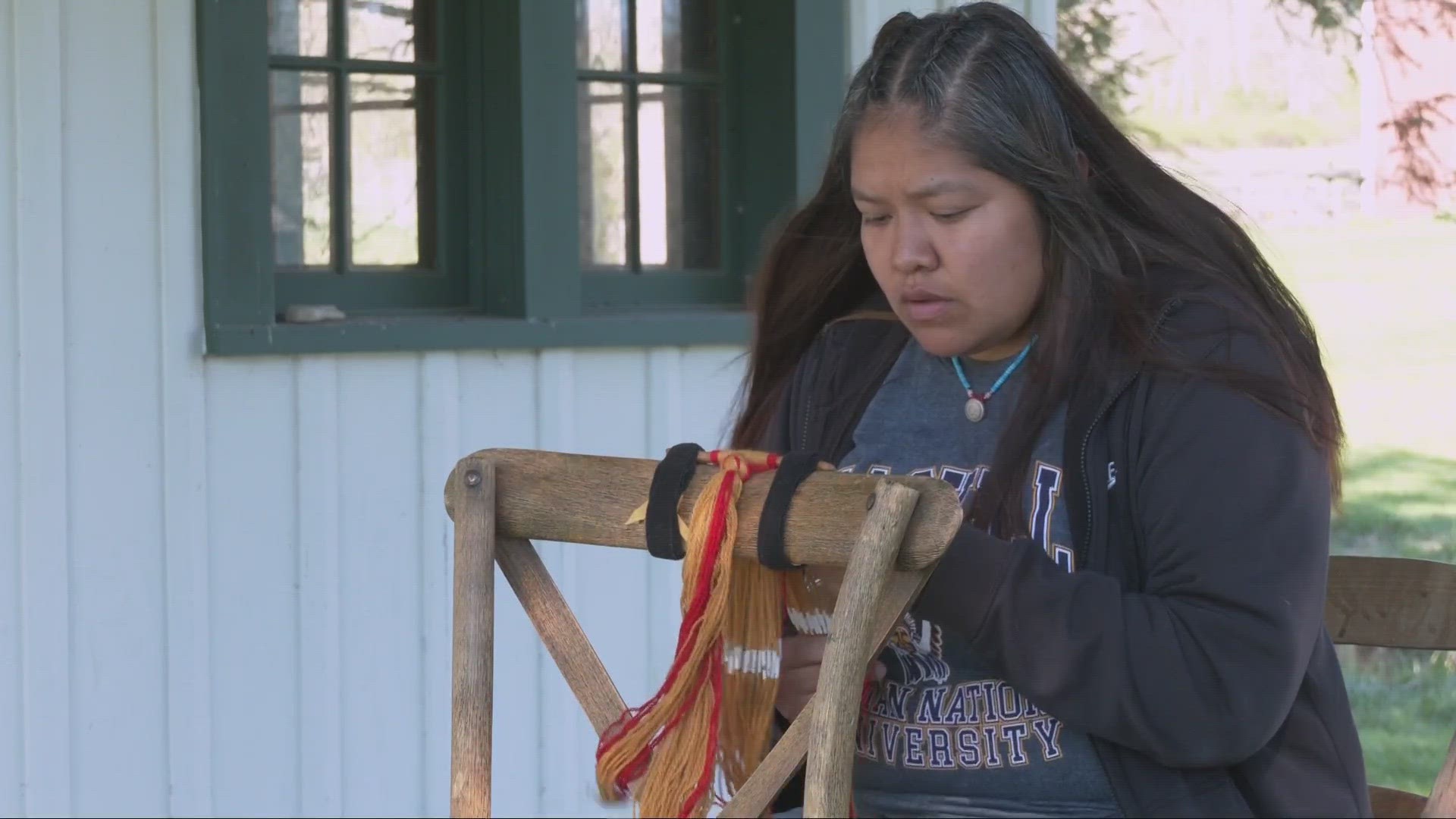BATH, Ohio — The deep connection between STEM and Native Americans started with understanding how the environment worked and experimentation. Now, that relationship is still being fostered today.
"Science and technology and mathematics is inherent in the culture and lifeways of American Indian people," Talon Silverhorn, cultural programs manager for the Ohio Department of Resources, said.
Silverhorn teaches visitors at Bath Township's Hale Farm and Village how people lived thousands of years ago in Ohio. Things on display for Native American Cultural weekend include examples of weaving, metal work, and other disciplines, all rooted in STEM.
"They developed understandings of the medicines and the compounds that they could use to heal themselves, what they could eat, what they could not eat, the tools that were available to them in the natural environment," Silverhorn explained. "And then from there, building on that and building a lifestyle that we inherited as modern native people."
One example? The knowledge needed to make stone tools.
"Once you understand the geometry of that silica bonding, you can make a stone tool out of any silica-based material," Silverhorn said.
Or the chemistry it takes to dye yarn. Dandelions give you a green-yellow color, while onion skins result in a brown-yellow.
"There's a bunch of them here at Hale Farm, and so some of the ladies were using red ocher," Native American educator Michelle Watson told us. "[With] that one, you've got to make sure you have enough in order to get a nice red, or it's just going to come out orange."
From culture to career, what is being done to get Native Americans involved in STEM today?
“We try to tell our kids that we were the first scientist, right?" Sarah EchoHawk, CEO of the American Indian Science and Engineering Society, answered. "'This is in your DNA. This is part of who you are. This is part of our culture and tradition.'"
AISES works with schools and tribes to get Native Americans into the STEM workforce. It exposes kids to the possibilities — such as a recent engineering fair — and follows them into college.
"What we're trying to do is definitely get them prepared, hopefully get them those classes that they need to have so that they are prepared to undertake a STEM major," EchoHawk said, "and then support them financially and also emotionally and socially while they're in college."
What EchoHawk says the Native worldview is growing, just last year, Nicole Mann became the first female Native American astronaut, becoming a role model for the younger generation.
"It is definitely an honor to represent Native Americans on the International Space Station," Mann remarked while aboard the ISS.
"It's that interconnectedness and understanding that everything is connected — they come from a collective viewpoint," EchoHawk added. "So, when they're viewing problems and thinking about how to solve problems, they're thinking about it from a collective standpoint rather than an individual standpoint, and that is unique."
A growing legacy of Native Americans in STEM, whether cooking Three Sister Soup with corn, beans, and squash; or walking in space.
"I see that as a continuation of the astronomical understandings of our ancestors looking at the sky and wondering, you know, how these things up there work," Silverthorn said.
According to EchoHawk, there is still a long way to go, as she says only 20% of U.S. professionals in STEM fields are women, and the number of Native women is significantly smaller.

